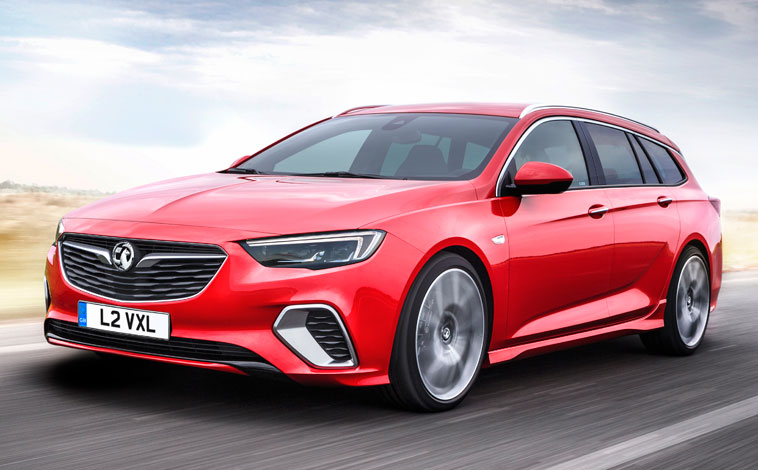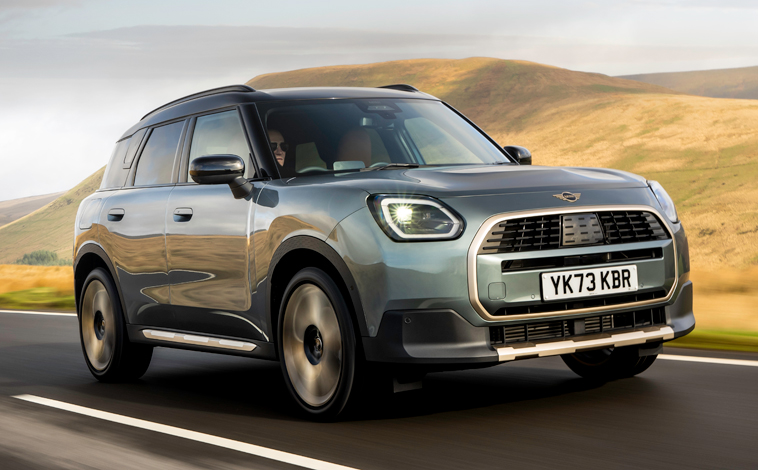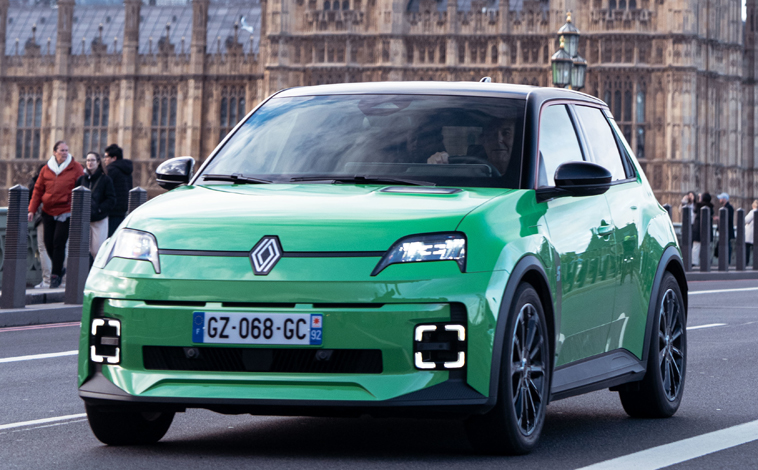Insignia GSi developed at Nürburgring
December 6, 2017
Following its world premiere at the 2017 Frankfurt Motor Show, Vauxhall has announced the prices for the all-new Insignia GSi, the performance variant of Vauxhall’s flagship model.

Available in both Grand Sport and Sports Tourer body styles, and powered by either a 2.0-litre turbo-petrol or 2.0-litre BiTurbo diesel engine, the Insignia GSi will be available from £33,375.
Arriving in Vauxhall showrooms in March, the GSi was developed at the Nürburgring in Germany, and is the fastest Vauxhall to have taken to the iconic track. At 160kg lighter than its predecessor – the Insignia VXR – the GSi features all-wheel drive with torque vectoring, mechatronic FlexRide chassis, Brembo four-cylinder brakes and Michelin Pilot Sport 4 tyres on 20-inch rims.
Buyers can choose from either the 2.0-litre 260PS/400Nm petrol engine, or the 2.0-litre 210PS BiTurbo diesel engine. Both units are paired with an eight-speed automatic gearbox with shift-paddles on the steering wheel, providing an active and responsive driving experience. In Grand Sport body style the Insignia GSi achieves 0-60mph in 6.9 seconds and has a top speed of 155mph.
The Grand Sport variant, with either engine option, is available from £33,375 on-the-road, with CO2 emissions of 197g/km (petrol) or 192g/km (diesel). Drivers looking for additional space can select the Sports Tourer body style, available from £34,875 on-the-road with either engine. The carbon emissions for this model are 199g/km for petrol and 192g/km for diesel.
Exterior design features include chrome air intakes, front and rear GSi bumpers, side sills and a large GSi rear spoiler (Grand Sport only), as well as incorporating Vauxhall’s innovative IntelliLux LED matrix headlamps. On the inside, the GSi features full-leather front sports seats, aluminium pedals, eight-inch colour information display with navigation, plus a Bose sound system and head-up display.
Four driving modes are available through the GSi’s FlexRide system, allowing damping, steering, gear change-up points and the car’s stability and traction systems to be configured according to a driver’s preference.
Latest News

Toyota unveils its new Urban Cruiser
Toyota has officially launched its all-new compact SUV, the Urban Cruiser, at its [...]
Carry on camping with Renault Trafic
The Renault Trafic is proving the perfect model for a brand new, off-grid, [...]
Barcelona players go track racing
Barcelona men’s football team players customised their new CUPRAs, after testing them during [...]
Suzuki Swift to Young Driver’s rescue
Young Driver, the UK’s foremost under-17s driver-training company, has just taken delivery of [...]
New Subaru Forester is right on track
Subaru UK & Ireland has announced the pricing and specifications for the all-new, [...]
Optional upgrades for the MINI family
Following the successful launch of the new MINI family, a range of additions [...]
Save £1,000 when ordering a new VW EV
Anyone ordering a new Volkswagen electric vehicle between now and March 3 this [...]
Get priority access to the new Renault 5
The Renault 5 E-Tech electric is available to order for R-Pass customers, giving [...]
Inster Cross has an adventurous side
Hyundai has announced pricing and specification for the Inster Cross, the all-new EV’s [...]
WWCOTY announces its finalists for 2025
The Women’s Worldwide Car of the Year (WWCOTY) has announced the winners of [...]
Prices announced for VW’s new Tayron
The all-new Volkswagen Tayron goes on sale in the UK on January 9 [...]
Skoda adds Design trim to Kamiq range
Škoda is building on the success of its award-winning Kamiq range by adding [...]
Kia celebrates 10 years of EV success
It’s incredible to think it’s been 10 years since Kia introduced its first [...]
INEOS partners with mountain rescue
INEOS Automotive partnered with Scottish Mountain Rescue (SMR) to help the charity deliver [...]
Prices revealed for BYD SEALION 7 model
BYD has announced the UK pricing for the SEALION 7 which will start [...]

